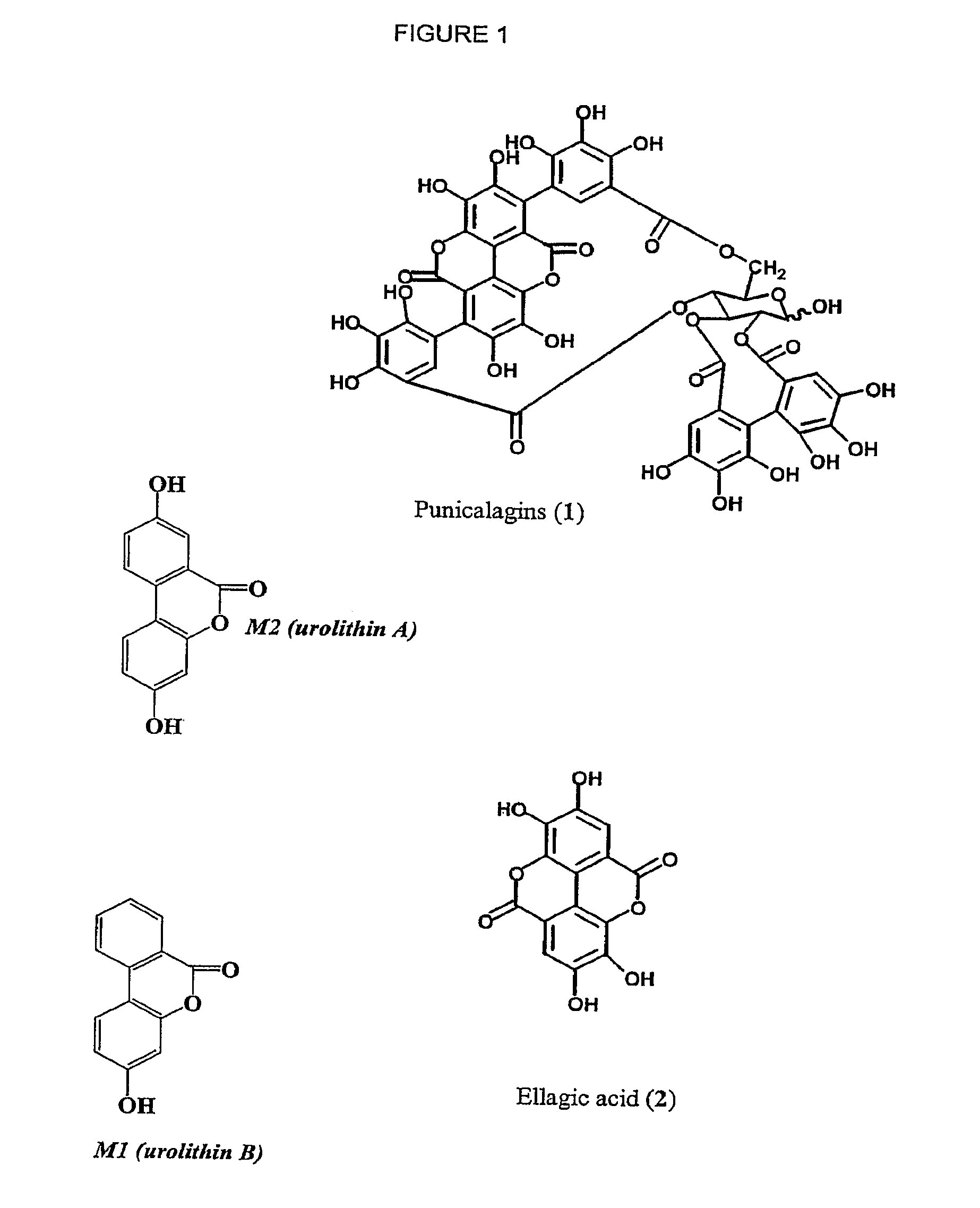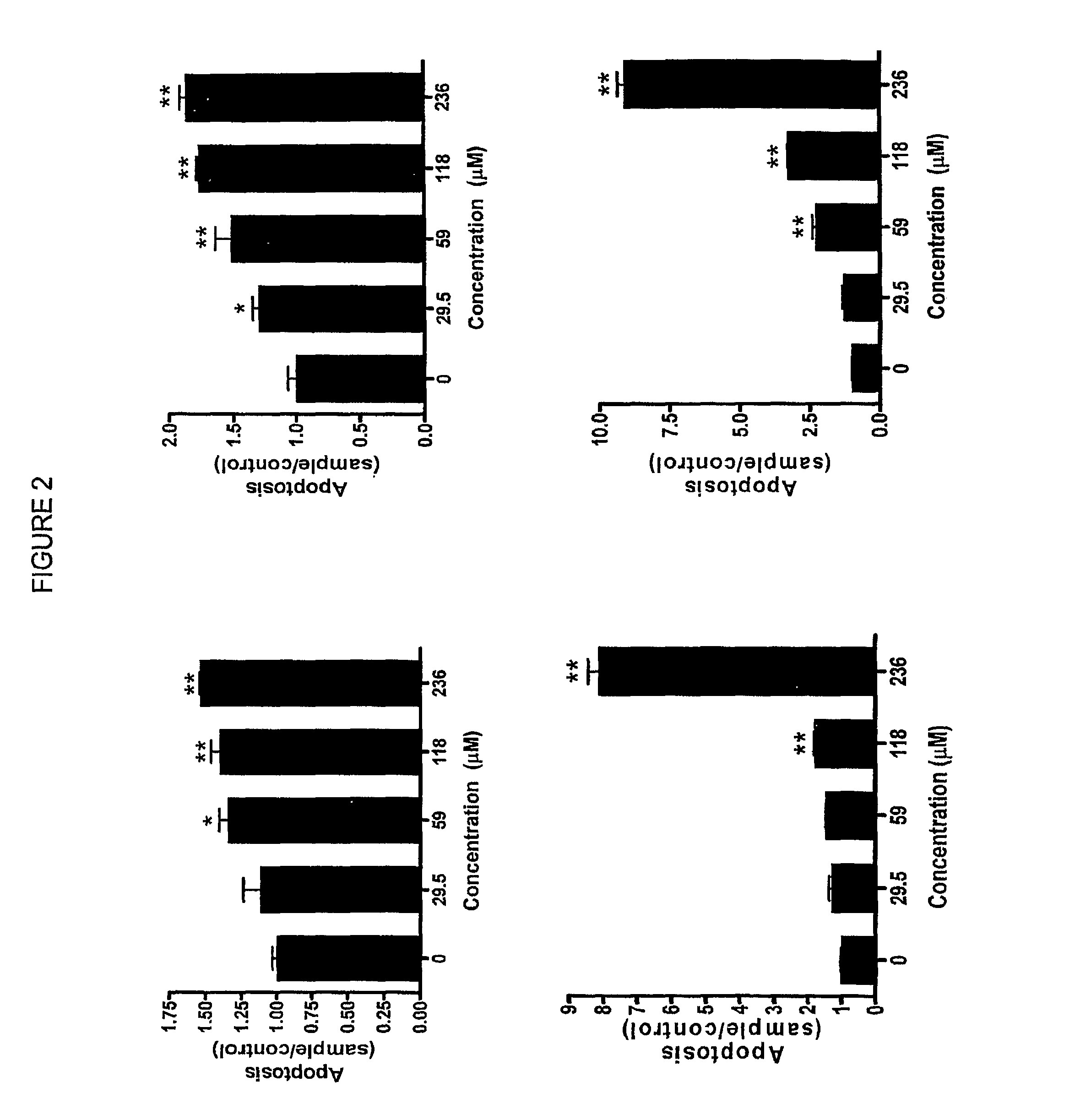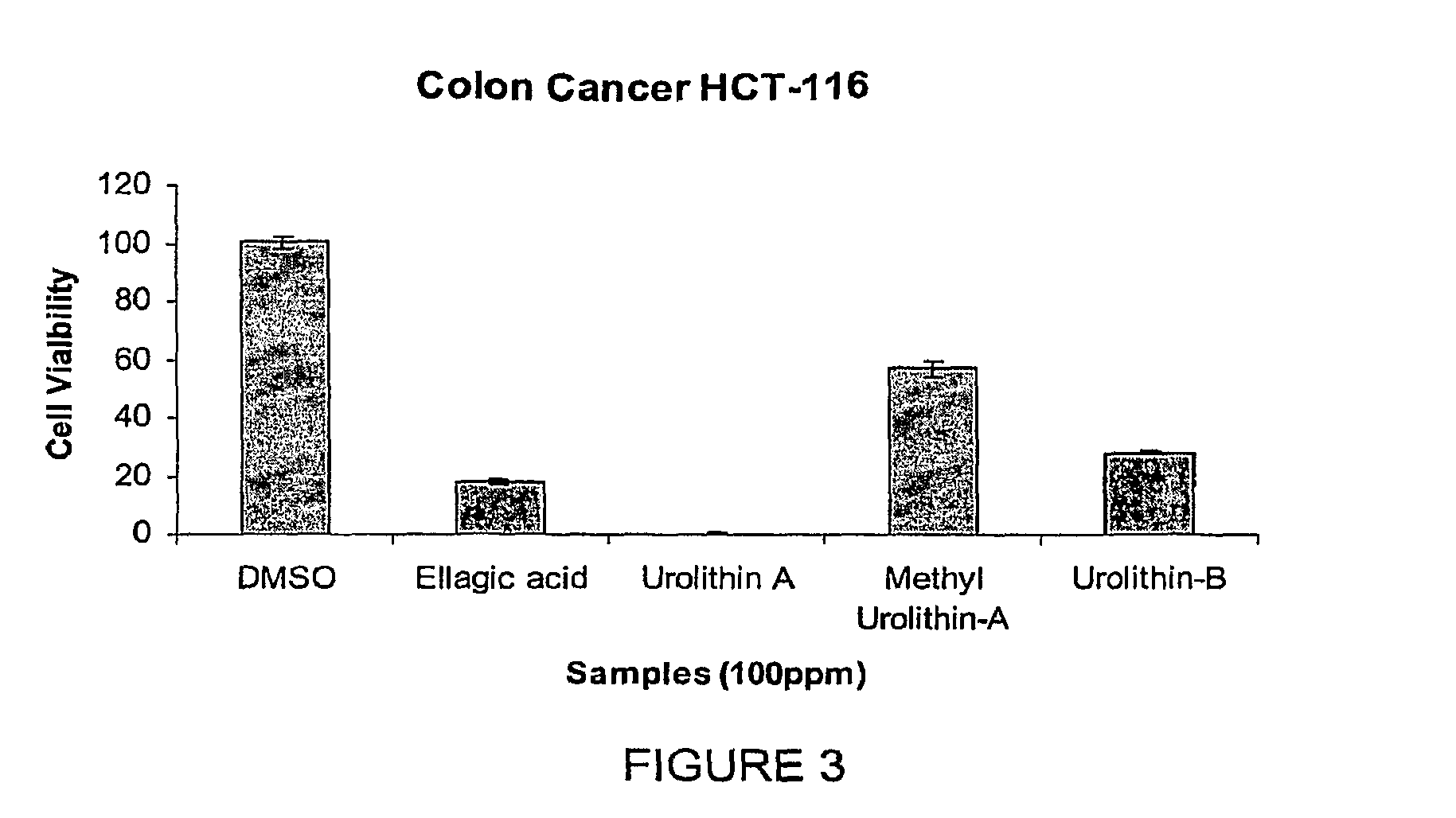Therapeutic uses of urolithins
a technology of urolithin and urolithin, which is applied in the field of therapeutic use of urolithin, can solve the problems of limited knowledge of their bioavailability, pharmacokinetics, disposition and metabolic fate in humans, and achieve the effects of reducing inflammation, preventing hyperproliferation, and inhibiting tumor growth
- Summary
- Abstract
- Description
- Claims
- Application Information
AI Technical Summary
Problems solved by technology
Method used
Image
Examples
example 1
Subjects, Materials and Methods
[0063]Reagents and Instruments. All solvents were HPLC grade and purchased from Fisher Scientific Co. (Tustin, Calif.). Ellagic, gallic, formic, phosphoric, 2-bromo-benzoic, 2-bromo-5-methoxybenzoic and acetic acids, resorcinol, potassium dihydrogen phosphate, ABTS (2,2□-aninobis-3ethylbenzothiazoline-6-sulphonic acid diammonium salt), manganese dioxide, Trolox (6-hydroxy-2,5,7,8-tetramethylchroman-2-carboxylic acid), magnesium chloride, Tris HCL, sodium acetate, diethylenetriamine pentaacetic acid (DTPA), deoxyguanosine (dG),β-D-glucuronidase (type X-A from Escherichia coli) and arylsulfatase (type VIII from abalone entrails) were purchased from Sigma-Aldrich (St. Louis, Mo.). The high performance liquid chromatography with ultraviolet detection (HPLC-UV) analyses were carried out on a Waters Alliance 2690 system equipped with a photo diode array (PDA) detector (Waters Corp., Milford, Mass.) and data handling was with Waters Millenium v 3.02 software....
example 2
Effect of Urolithins on Colon Cancer Cells
[0081]Antiproliferative activity. EA and EA-metabolites (gallic and gallagic acids, urolithin B and methylated-urolithin A) were evaluated for antiproliferative activity against the human colon cancer cell line HCT-116. The cells were grown to a concentration of 10,000 cells per well in a 96 well format; and were then resuspended in medium containing vehicle control or the indicated compound: Ellagic acid, urolithin A, methyl urolithin A, or urolithin B, at a concentration of 100 μg / mL. The cells were incubated for 48 hrs, and the viability assayed by the CellTiter-Glo® Luminescent Cell Viability Assay (Technical Bulletin #288, Promega Corp., Madison, Wis.).
[0082]These data, as shown in FIG. 3, demonstrate the efficacy of the ellagitannin metabolites as anti-proliferative agents. The data show that urolithin A is the most active, then ellagic acid, urolithin B and methyl urolithin A.
example 3
Effect of Urolithins on Pancreatic Cancer Cells
[0083]Antiproliferative activity. EA and EA-metabolites (gallic and gallagic acids, urolithin B and methylated-urolithin A) were evaluated for antiproliferative activity against the human pancreatic cancer cell lines ASPC-1 and BXPC-3. The cells were grown to a concentration of 10,000 cells per well; and were then resuspended in medium containing the vehicle control or the indicated compound: Ellagic acid, urolithin A, methyl urolithin A, or urolithin B, at a concentration of 100 μg / mL. The cells were incubated for 48 hrs, and the viability assayed byCeliTiter-Glo® Luminescent Cell Viability Assay (Technical Bulletin #288, Promega Corp., Madison, Wis.).
[0084]These data shown in FIG. 4 demonstrate the efficacy of the ellagitannin metabolites as anti-proliferative agents. The data show that urolithin A is the most active, then ellagic acid, urolithin B and methyl urolithin A.
PUM
| Property | Measurement | Unit |
|---|---|---|
| time | aaaaa | aaaaa |
| volume | aaaaa | aaaaa |
| concentrations | aaaaa | aaaaa |
Abstract
Description
Claims
Application Information
 Login to View More
Login to View More - R&D
- Intellectual Property
- Life Sciences
- Materials
- Tech Scout
- Unparalleled Data Quality
- Higher Quality Content
- 60% Fewer Hallucinations
Browse by: Latest US Patents, China's latest patents, Technical Efficacy Thesaurus, Application Domain, Technology Topic, Popular Technical Reports.
© 2025 PatSnap. All rights reserved.Legal|Privacy policy|Modern Slavery Act Transparency Statement|Sitemap|About US| Contact US: help@patsnap.com



